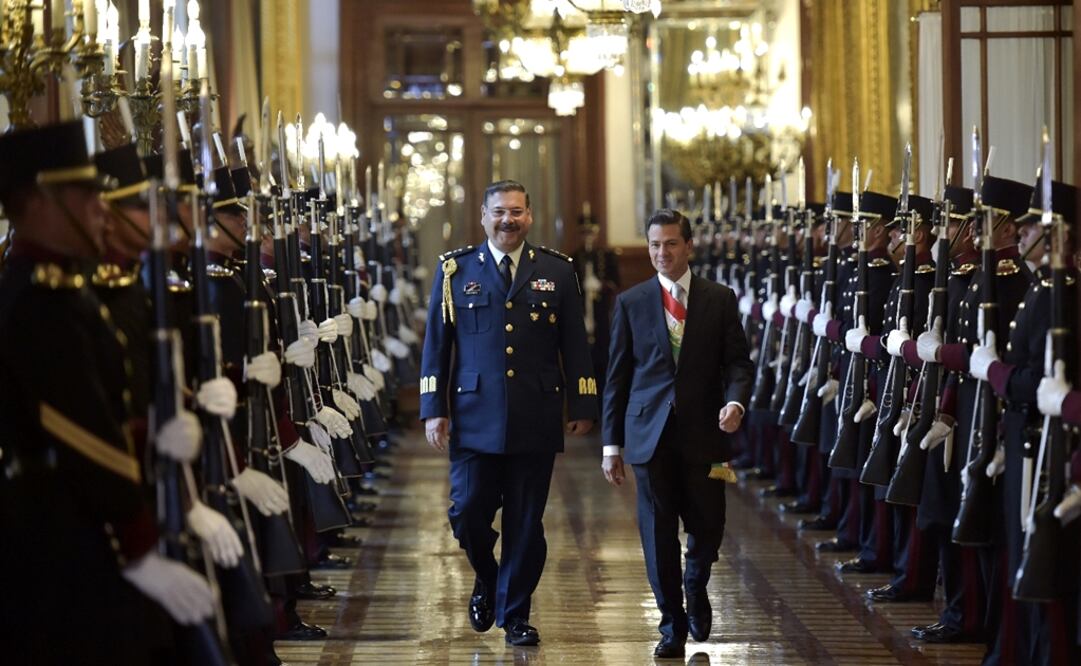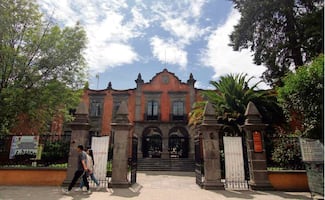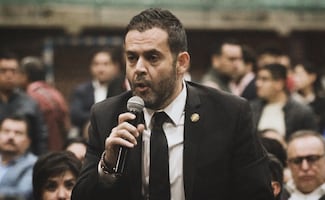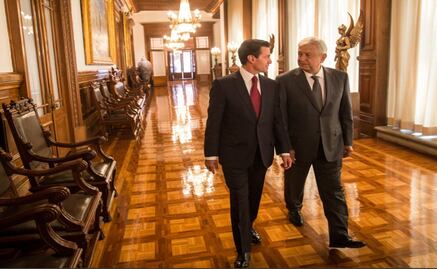Más Información

Harfuch sostiene llamada telefónica con el ministro de Seguridad canadiense; acuerdan fortalecer Plan de Acción Canadá–México
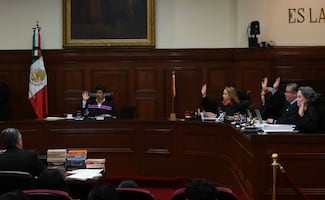
Corte perfila iniciar 2026 con tema del aborto; plantea anular reducción de 12 a 6 semanas para interrumpir el embarazo

Jueza cancela audiencia del caso María Amparo Casar; FGR deberá continuar acusación ante juez del Reclusorio Norte
On the morning of July 3 , the National Palace was put on the spotlight due to a private meeting between the President of Mexico Enrique Peña Nieto and president-elect Andrés Manuel López Obrador . The protocol lounges, Presidents Gallery, restricted area hallways, all of which are usually destined for the head of state’s private use, served as a stage for the historic meeting.
Upon concluding their conversation, at a press conference in the Guillermo Prieto Hall , known for its Art Deco style and former use as a federal treasury until 1997 , López Obrador insisted that he wouldn’t live or work in Los Pinos, the official residence and office of the President of Mexico . Instead, he intends to work at the National Palace in the city centre. Though at the time he thought about renting a property near the premises, a day before, at a TV interview, he stated that he had not ruled out the possibility of living there, as he had planned in his presidential campaign of 2006 .
Should this idea be materialized, the National Palace could become a presidential residence for the first time in 134 years . The last president to live in it was Porfirio Díaz , years before the Mexican Revolution . According to the historian Efraín Castro Morales , Díaz left the presidential premises of the Palace on December 16, 1884 , moving to the Castle of Chapultepec . Since then, the building has served as an office for the Ministry of Finance .
Today, both the Presidency and the president’s chief of staff occupy the south wing of the building, which holds a presidential office, the Courtyard of Honor, protocol lounges, a dining room, and several galleries , which the head of state occupies during special events, such as the Cry of Independence , military parades, and receptions for foreign heads of state, ambassadors, and high-level officials.
At the National Palace, which occupies almost 10 acres , there are also museums, galleries, murals, archaeological windows, and several public areas that the people of Mexico can visit for free .
People have wondered just how feasible it would be for the President of Mexico to occupy the palace, and how it would change its accessibility for general audiences. The architect Sergio Zaldívar Guerra , along with the historian Efraín Castro Morales , who have worked on the refurbishment and preservation of the building, have considered that it is indeed possible for it to become an official residence once again, since there are spaces that could be adapted for domestic use.
However, Sergio Zaldívar Guerra considers that the most ancient part of the historic monument, which encompasses the central Courtyard, should remain untouchable, as well as the old Treasury, where the Viceroy’s palace was once located. The Marian Patios area , which is where Benito Juárez used to live, should also remain unaltered, he stressed.
“I believe that the building could be inhabited by the President, his family, and all his staff, as long as the old parts of the building are preserved,” stated Castro Morales.
The National Palace “needs to be a place where the common people can go to; we can’t have it become some kind of bunker as it was when I was young. It has to be a house for the citizens, so that people may view it as their cultural property, and not military barracks representing the government’s unquestionable authority which citizens should submit to,” commented Zaldívar after recalling the student movement of 1968 .
Today, the Palace is far from being the bunker it used to be in the 1970s . Though there are still some restricted areas, such as the one managed by the Presidency, audiences are free to visit several spaces with archaeological windows through which people can see the foundations of Moctezuma’s houses and the Palace of Hernán Cortés . The Garden of the Empress shows a botanic and artistic tour, with sculptures from the Ministry of Finance’s collection . Each of its corners and alcoves reflect its 600-year history . Its construction started in 1522 as Hernán Cortés’ second private residence , which was to be built over the ruins of Moctezuma’s palace . It later became a residence for Spanish viceroys , and during the revolution, it was home to several government meetings and conflicts.
“The National Palace has suffered a great deal of transformations since the 16th Century until today, caused by changes in government, ideology, politics, and culture,” Efraín Castro added. Now, it seems that there is a new era in store for Mexico City’s iconic building .
dm
Noticias según tus intereses
[Publicidad]
[Publicidad]




